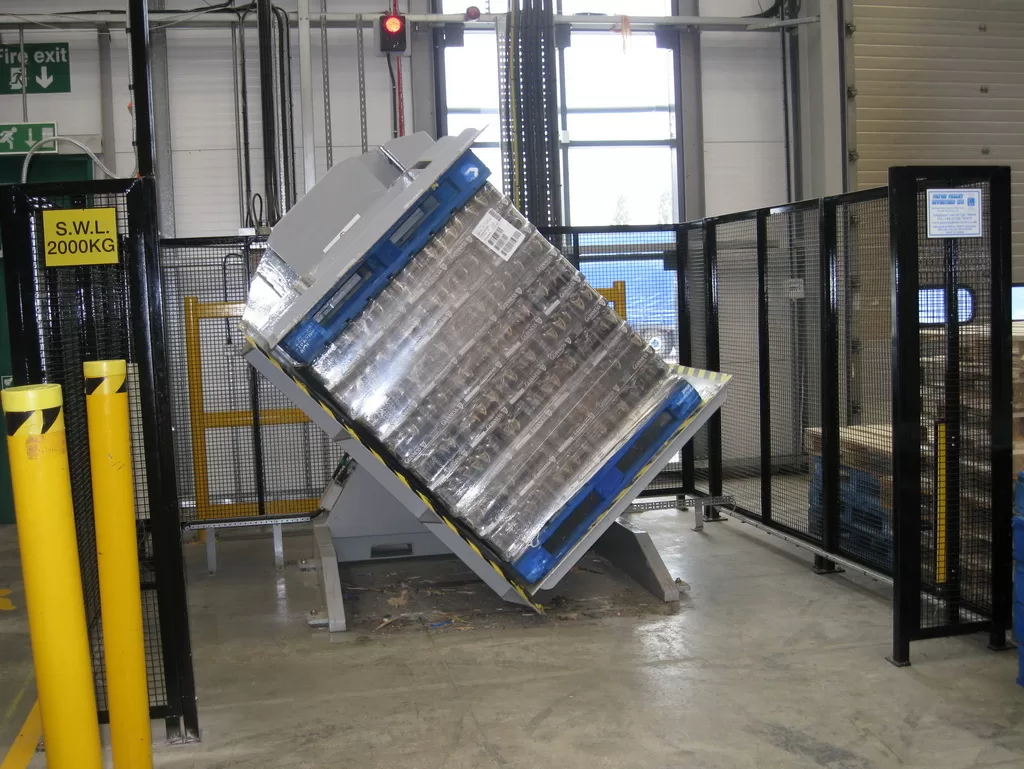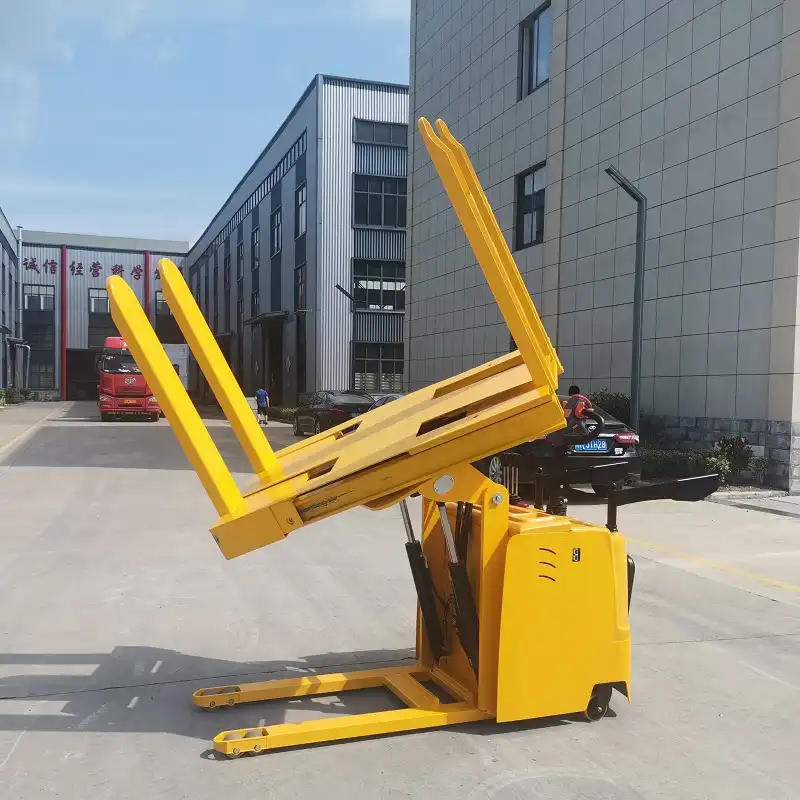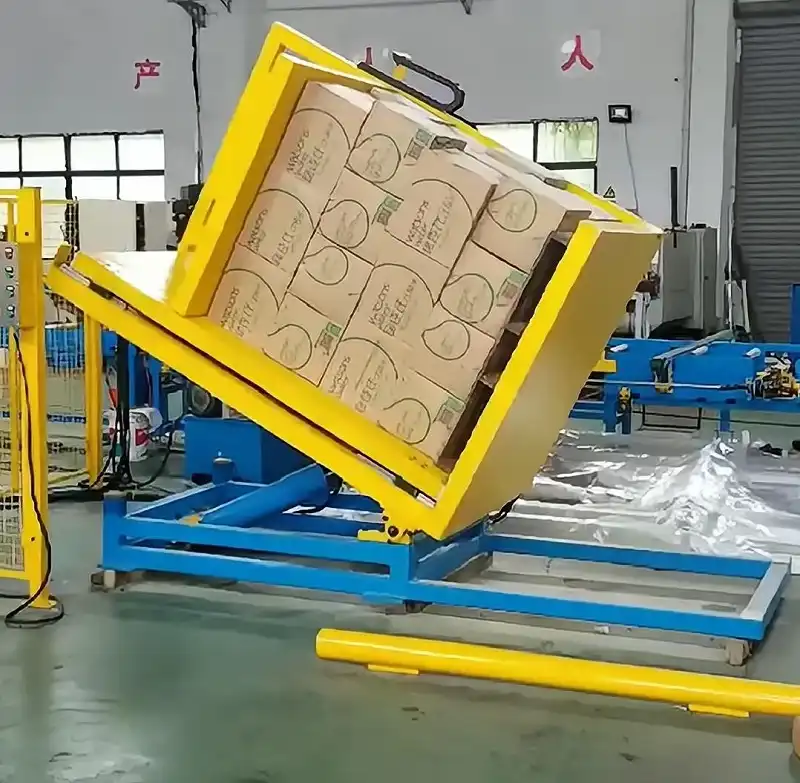How to Compare Customization Options in Automatic Pallet Inverter Solutions?
The versatility of automatic pallet inverter solutions lies in their ability to adapt to specific business needs. However, not all customization options are created equal. When selecting the right inverter, the question isn’t just about “what’s available” but “what works best for you.”
![Image: A modern warehouse with automated pallet inverters]
From adjusting load capacities to integrating advanced automation, choosing the right features requires a balance between operational goals and available technology. Businesses often overlook customization, leading to investments that fail to fully meet their unique demands.
Identifying the right customization options involves understanding your workflow, current challenges, and the technological enhancements that can solve them. This is where a thorough comparison of solutions becomes crucial.
[claim] To truly benefit from an automatic pallet inverter, you need to evaluate customization options that align with your processes, boost efficiency, and ensure long-term reliability.
1. Why Does Customization Matter in Pallet Inverters?
1.1 The impact of customization on productivity
Customization directly impacts productivity by tailoring the equipment to specific workflows. A pallet inverter built to standard specifications might suffice for general operations but may fall short when handling unique products or environments. Features like adjustable clamps, programmable rotations, or material-specific settings ensure seamless integration with your existing setup.
1.2 Identifying operational gaps
Operational gaps often reveal themselves in bottlenecks. Perhaps your current system struggles with irregularly shaped loads or fails to accommodate specific material types. By identifying these issues, you can select customization options that address them directly, whether it’s enhanced stability for fragile items or increased capacity for bulkier loads.
![Image: A customized pallet inverter handling irregular loads]
1.3 Tailoring features to specific needs
Customization isn’t just about solving existing problems; it’s about preparing for future demands. For instance, industries with seasonal peaks might require enhanced throughput capabilities. Adding programmable settings or multi-pallet handling features allows businesses to scale operations efficiently without additional investments.
2. How Do Load Capacities and Dimensions Influence Choices?
2.1 Standard vs. customized load handling
While standard pallet inverters cater to fixed load ranges, customized solutions accommodate variations. Industries handling diverse weights or unconventional pallet sizes benefit from load-specific designs, ensuring both efficiency and safety during operation.
2.2 Understanding compatibility with pallet sizes
Pallet sizes vary across industries, and a one-size-fits-all approach doesn’t work. For instance, larger pallets in heavy industries may require reinforced designs, while smaller, lightweight pallets in retail sectors may benefit from compact inverters. Ensuring compatibility avoids unnecessary adjustments during operations.
![Image: Pallet inverter working with oversized pallets]
2.3 Ensuring seamless operation with tailored designs
Tailored designs not only fit your physical requirements but also optimize operational flow. Features like custom grips, flexible rotation angles, or even automated pallet switching reduce manual interventions, streamlining the entire process.
3. What Role Does Automation Play in Customization?
3.1 Automation features that enhance efficiency
Automation is the cornerstone of modern pallet inverters, and customizable automation options take efficiency to the next level. Features like programmable controls, automated pallet swapping, and integrated sensors reduce manual handling while improving precision. These enhancements save time, reduce errors, and ensure consistency across operations.
3.2 Adapting automation to industry-specific needs
Different industries demand different levels of automation. For instance, pharmaceutical companies may require sterile environments and automated handling systems to avoid contamination. In contrast, manufacturing industries may prioritize speed and high-capacity operations. Tailored automation ensures the inverter aligns perfectly with the unique demands of your sector.
![Image: Automated pallet inverter in a pharmaceutical environment]
3.3 Future-proofing with scalable automation
Investing in scalable automation ensures your system can adapt to growing demands. For instance, an inverter with upgradable control software or modular automation features allows you to stay competitive without needing a complete system overhaul as your business evolves.
4. How to Evaluate Cost vs. Value in Customization?
4.1 Understanding the cost of customization
While customization often comes at a premium, it’s essential to weigh the upfront costs against long-term benefits. Features that reduce downtime, enhance safety, or improve workflow efficiency often pay for themselves within months. A detailed cost-benefit analysis helps you make an informed decision.
4.2 Recognizing value-added features
Some customization options deliver added value without significantly increasing costs. For example, including a touchscreen interface or energy-efficient components might slightly increase the initial investment but save on operational expenses and improve ease of use. Identifying these features ensures you maximize ROI.
![Image: Cost-benefit analysis chart for pallet inverters]
4.3 Balancing investment with operational gains
When evaluating cost vs. value, focus on the long-term impact on your operations. Customization that aligns with your business needs not only increases efficiency but also enhances worker safety and customer satisfaction, making it a worthwhile investment.
Conclusion
[claim] Customization in automatic pallet inverter solutions is not a luxury but a necessity for businesses aiming to optimize workflows, improve safety, and remain competitive.
By understanding your operational gaps, exploring automation options, and balancing cost with value, you can invest in a pallet inverter that meets your immediate needs and adapts to future demands. The right customization not only ensures efficiency but also positions your business for sustainable growth in an ever-evolving market.




















